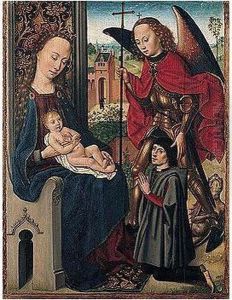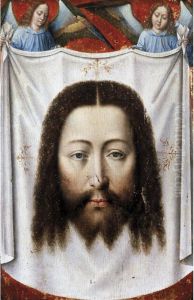Master Of The Legend Of Saint Ursula Paintings
The Master of the Legend of Saint Ursula is the notname given to an unidentified Early Netherlandish painter who was active in Bruges during the late 15th and early 16th centuries. His pseudonym derives from a series of paintings depicting the Legend of Saint Ursula, which is his most recognized work. Not much is known about the artist's life, including his real name, birth and death dates, or his training. His oeuvre was attributed to him based on stylistic similarities in artwork from that period.
Art historians have tentatively dated his active period based on stylistic analysis of his paintings, which suggest he was influenced by the works of Hans Memling, among others. The Master's work is characterized by its detailed narrative scenes, meticulous attention to detail, and vibrant use of color. His compositions often feature intricate landscapes and interiors, with figures dressed in contemporary Burgundian fashion.
The Master of the Legend of Saint Ursula's clientele primarily consisted of the wealthy merchant class and the Church. His works were devotional in nature, intended for both public and private use. They often included altarpieces, donor portraits, and panels for private devotion. While the artist's identity remains unknown, his contributions to the Flemish art world are significant, as his paintings provide insight into the cultural and religious life of Bruges during the turn of the 16th century.
Despite the anonymity of the Master of the Legend of Saint Ursula, his surviving works continue to be studied and admired for their beauty and historical value. They can be found in various museums and collections around the world, allowing the legacy of this enigmatic artist to endure. The lack of information about his life only adds to the intrigue surrounding his artwork and the period in which he worked.

